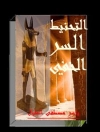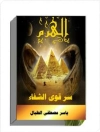An examination of the fabrics, garments and cloth of the Iberian Middle Ages, bringing out in particular the international context.
The Medieval Iberian Peninsula, encompassing various territories which make up present-day Spain and Portugal, was an ethnic and religious melting pot, comprising Christian, Jewish and Muslim communities, each contributing to a vibrant textile economy. They were also defined and distinguished by the material culture of clothing and dress, partly dictated by religious and cultural tradition, partly imposed by rulers anxious to avoid cross-ethnic relationships considered undesirable. Nevertheless, textiles, especially magnificent Islamic silks, crossed these barriers.
The essays in this volume offer the first full analysis of Iberian textiles from the period, drawing on both material remains and historical documents, supported by evidence from contemporary artwork. Chapters cover surviving textiles, many of them magnificent silks; textile industries and trade; court dress and its use as a language of power and patronage; the vast market in utilitarian textiles for lower-status clothing and furnishings; and Muslim and Jewish dress. It also considers Arabic and Jewish texts as sources of information on textiles and the Arabic garment-names which crossed into Spanish. Particular emphasis is given to the the different ethnicities of Iberia and their influences on the use and trade of garments (both precious and common-place) and textiles.
Table des matières
Introduction
María Barrigón,
Naḥum Ben-Yehuda,
Gale R. Owen-Crocker and Joana Sequeira
I The Historical Background/Context
1 From the Five Kingdoms to the Hispanic Monarchy: Political Structures, Ideology and Historical Development in the Medieval Iberian Peninsula (1157-1504)
David Nogales Rincón
II Techniques, Trade and Industry
2 Textile Techniques in the Iberian Peninsula (Thirteenth to Fourteenth Centuries)
María Barrigón
3 Cloth Tade in the Iberian Kingdoms during the Late Middle Ages
Máximo Diago Hernando
4 Textiles in the Crown of Aragon: Production, Commerce, Consumption
Germán Navarro Espinach
5 The Textile Industry in al-Andalus
Adela Fábregas
6 Flax, Wool and Silk: Textile Industries in Medieval Portugal
Joana Sequeira
III Social Context
7 Dress as a Language: A Survey of Arabic Texts from al-Andalus
Manuela Marín
8 Muslim Dress in Medieval Portugal: Textual Evidence in the Context of the Iberian Peninsula
†
Maria Filomena Lopes de Barros
9 Medieval Castilian Garments and their Arabic Names
Dolores Serrano-Niza
10 Clothing, Furnishings and Ceremonies at the Castilian Court (
c. 1214−
c. 1332)
María Barrigón
11 Fabrics and Attire at the Court of Navarre in the Second Half of the Fourteenth Century
Merche Osés Urricelqui
12 Textile Production and Jewish Clothing in the Iberian Peninsula: Characteristics, Customs and Differences between Catalan and Other Jewish Communities
Esperança Valls Pujol
13 Silk as Reflected in Medieval Iberian Jewish Literature
Na
ḥum Ben-Yehuda
14 The Garment and the Difference: The Attire of Portuguese Jews and New Christians (
Conversos) during the Thirteenth to Fifteenth centuries
Susana Bastos Mateus
Index of Persons and Places
Index of Textile terms
A propos de l’auteur
Joana Sequeira is a Contracted Researcher at the University of Minho (Lab2PT), Portugal. A medieval economic historian, she publishes on textile production, trade and consumption.












